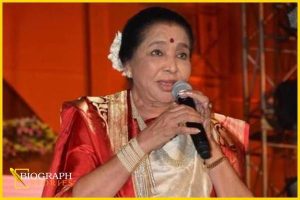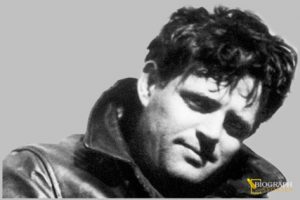
Mahatma Gandhi’s Quick Fact:
Mohandas Karamchand Gandhi, also known as Mahatma Gandhi, was an Indian lawyer, anti-colonial nationalist, and political ethicist, who employed nonviolent resistance to lead the successful campaign for India’s independence from British rule, and in turn inspired movements for civil rights and freedom across the world.
Born: October 2, 1869,
Nationality: Indian
Spouse: Kasturba Gandhi (m. 1883–1944)
Assassinated: January 30, 1948, New Delhi, India
Children: Harilal Gandhi, Devdas Gandhi, Ramdas Gandhi, Manilal Gandhi
Mahatma Gandhi’s Biography:
Mahatma Gandhi, the simple man of heroic inner strength was the primary leader of India’s independence movement in 1947 and the creator of a non-violent civil disobedience that would influence the world even in today’s time. Martin Luther King Jr. and Nelson Mandela were the famous of many inspired man around the world who followed the lifestyle and teachings of this legendary human being. He was killed by a fanatic in 1948.
Mahatma Gandhi Early Life and Education
Mohandas Karamchand Gandhi worldwide known as Mahatma Gandhi, was born on October 2, 1869 in Porbandar, Kathiawar, India. He was the son of Karamchand Gandhi and Putlibai. Being a shy, ordinary teenager, Gandhi wanted to become a doctor. But his father drove him to enter the legal profession instead and sent him London to study law in the age of 18 in 1888.
He struggled to become a lawyer in his early age and used to become nervous and blanked when the time came to cross-examine a witness. In the view of religion, Gandhi grew up worshiping the Hindu god Vishnu and following Jainism which was morally rigorous ancient Indian religion that espoused nonviolence, fasting, meditation and vegetarianism. In his later life, Gandhi founded an ashram in Ahmedabad, India, that was open to all castes. Wearing a simple loincloth and shawl, Gandhi lived an austere life devoted to prayer, fasting and meditation. He became known as “Mahatma,” which means “great soul.”
Gandhi after a lot of struggle, gained a one-year contract to perform legal services in South Africa. In April 1893, he sailed for Durban in the South African state of Natal. Upon his arrival in South Africa, he quickly noticed by the discrimination and racial segregation faced by Indian immigrants at the hands of white British and Boer authorities.
Political Life of Mahatma Gandhi
Nonviolent Civil Disobedience
From the time of his being in South Africa, Gandhi’s act of civil disobedience awoke in him a determination to devote himself to fighting the deep disease of color prejudice. Gandhi formed the Natal Indian Congress in 1894 to fight discrimination. Soon after that he returned to India. After a brief trip to India in late 1896 and early 1897, Gandhi returned to South Africa with his wife and children.
Satyagraha
In 1906, Gandhi organized his first mass civil-disobedience campaign, which he called “Satyagraha” in reply to the South African Transvaal government’s new restrictions on the rights of Indians.
After years of protests, the government imprisoned hundreds of Indians in 1913, including Gandhi. Under pressure, the South African government accepted a compromise negotiated by Gandhi and General Jan Christian Smuts that included recognition of Hindu marriages and the abolition of a poll tax for Indians.
Opposition to British Rule in India
In 1919, when India was still under the firm control of the British, Gandhi had a political reawakening when the newly enacted Rowlatt Act authorized British authorities to imprison people suspected of sedition without trial. In response, Gandhi called for a Satyagraha campaign of peaceful protests and strikes.
At that time, army led by British Brigadier General Reginald Dyer fired machine guns into a crowd of unarmed demonstrators and killed nearly 400 people. On that very moment, Gandhi returned the medals he earned for his military service in South Africa and opposed Britain’s mandatory military draft of Indians to serve in World War I.
Gandhi became a leading figure in the Indian home-rule movement and called for mass boycotts from all ages, groups and casts of people against British. Rather than buying British-manufactured clothes, he began to use a portable spinning wheel to produce his own cloth.
British authorities arrested Gandhi in 1922 but had to release him in February 1924 after his appendicitis surgery.
The Salt March
On the response to the Britain’s Salt Acts with bizarre compliances in 1930, Gandhi planned a new Satyagraha campaign, The Salt march, entailing a 390-kilometer/240-mile march to the Arabian Sea, where he would collect salt in symbolic defiance of the government monopoly.
The Salt March created a mass civil disobedience swept across India and approximately 60,000 Indians were jailed for breaking the Salt Acts, including Gandhi, who was imprisoned in May 1930.
In January 1931, he made an agreement with Lord Irwin to end the Salt Satyagraha in exchange for concessions that included the release of thousands of political prisoners. Hoping that the agreement would be a stepping-stone to home rule, Gandhi attended the London Round Table Conference on Indian constitutional reform in August 1931 as the sole representative of the Indian National Congress.
India’s Independence from Great Britain
As Great Britain found itself engulfed in World War II in 1942, Gandhi launched the “Quit India” movement that called for the immediate British withdrawal from the country. After the Labour Party defeated Churchill’s Conservatives in the British general election of 1945, it began negotiations for Indian independence with the Indian National Congress and Mohammad Ali Jinnah’s Muslim League. Gandhi played an active role in the negotiations, but he could not prevail in his hope for a unified India. Instead, the final plan called for the partition of the subcontinent along religious lines into two independent states—predominantly Hindu India and predominantly Muslim Pakistan.
Gandhi’s Wife and Kids
Gandhi wed Kasturba Makanji only at the age of 13 who was a merchant’s daughter. She died in Gandhi’s arms in February 1944 at the age of 74. In 1885, Gandhi endured the passing of his father and shortly after that the death of his young baby. In 1888, Gandhi’s wife gave birth to the first of four surviving sons. He had total 4 sons all together.
Assassination of Mahatma Gandhi
On January 30, 1948, 78-year-old Gandhi was shot and killed by Hindu extremist Nathuram Godse, who was upset at Gandhi’s tolerance of Muslims. Godse and a co-conspirator were executed by hanging in November 1949. Additional conspirators were sentenced to life in prison.
Even after Gandhi’s assassination, his commitment to nonviolence and his belief in simple living making his own clothes, eating a vegetarian diet and using fasts for self-purification as well as a means of protest.








